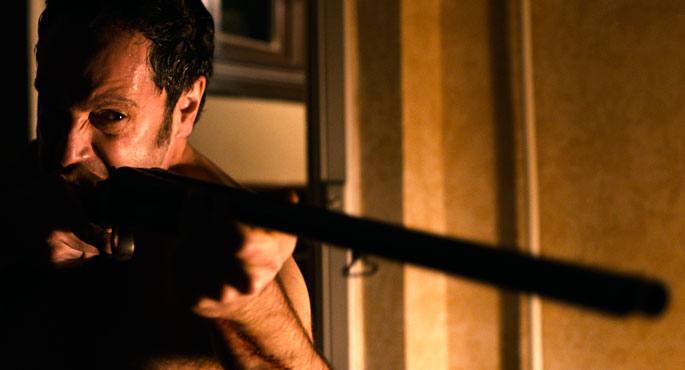
- “With your permission I’m going home, to be a heart attack,” says John Travolta in black comedy Pulp Fiction. The genus lover of the dark sarcasm has made a tour of the big screen and the final result we have at home: Urte berri on, AMONA!

On the doorstep of a nuclear cataclysm, the high-level authorities have come together to decide how to act in the country. Dr. Strangelove will propose that every man has ten young women to live and reproduce in the underground footsteps for at least 100 years, and the rest of the men in the room will find it a good idea. Although we can find older examples, Dr. Strangelove or, led by Stanley Kubrick and starring comedian Peter Sellers: The film How I Learned to Stop Worrying and Love the Bomb (1964) is considered the antecedent of black comedy in film.
Gender appears almost always linked to accident and especially to death. An example of British contagion is the loose scene of the shameless Monty Python (The Holy Grail, Life of Brian), Snatch by Guy Ritchie or the American film Death at a funeral, which mixes a disappointed death in the burial, a dwarf lover and drugs. The French Delicatessen brought us the history of the neighbours hungry for meat and the Belgian C’est arrivé près de chez vous, cynical parodia of films on serial series. But in Asian cinema we look for the most surprising proposals, as is the case with the Japanese Battle Royale, which in the style of manga and video game unites violence, blood, terror and humor. More subtle and ironic, The Addams Family, who likes to relax in the torture room: Gomez, Morticia and the rest of the creators were Charles Addams, one of the most influential comic book makers in New York.
Several directors have been made with black comedy, with a personal style. Tim Burton (Sweeney Todd, Sleepy Hollow, Beetlejuice) is the creator of a smile in the saddest, saddest and most sinister environments (Fargo, A serious man, No country for Old Men); the Coen brothers seek laughter with empty and raw satire (Fargo, A A serious man, no man, no man. However, the protagonists of the South Park series are the cursed protagonists of the series – ask the poor Kenny who dies in the most cruel forms of all chapters.
From txotx to new year, agridulce
Among us, Telmo Esnal and Asier Altuna are two of the tándems that we cannot give up. In the short Txotx we were represented a sidrry with a very special meal, played with cloning in 40 ezetz and Aupa Etxebeste! After success, Esnal tells us that they wanted to return to that dark world of the beginnings. On this occasion, it goes one step further, Urte berri on, AMONA!, written by both and directed solo by Esnal, more savage, more heartbreaking, more ridiculous. With touches of mafia, thriller and tragedy, the director of Zarauztarra prepares a gender salsa with art, a dynamic history full of curves, a serious series of barbarities very well represented by the actors. The film focuses on the headaches caused by the annoying grandmother in the family and “we thought about writing the script, are we going through?” but then we read the newspaper and realized that no, that reality exceeds fiction. What’s more, an anecdote harder to believe, like cutting sheets, is taken from reality,” Esnal explains. How do you define your mood? “Bittersweet, because you’re laughing… but what? Serious issues are discussed in the liver: the role of the woman in society, the behavior of the husband, violence… I mix humor, drama, suspense, but not methodically, but intuitively, so I am also in my life, I make involuntary black humor”. Hitchcock, Ferreri, Berlanga, the Coen brothers, Lumet… are references, but he prints a personal stamp to his works, does what goes inside, and from within comes a sharp black humor to Telmo ESNAL.